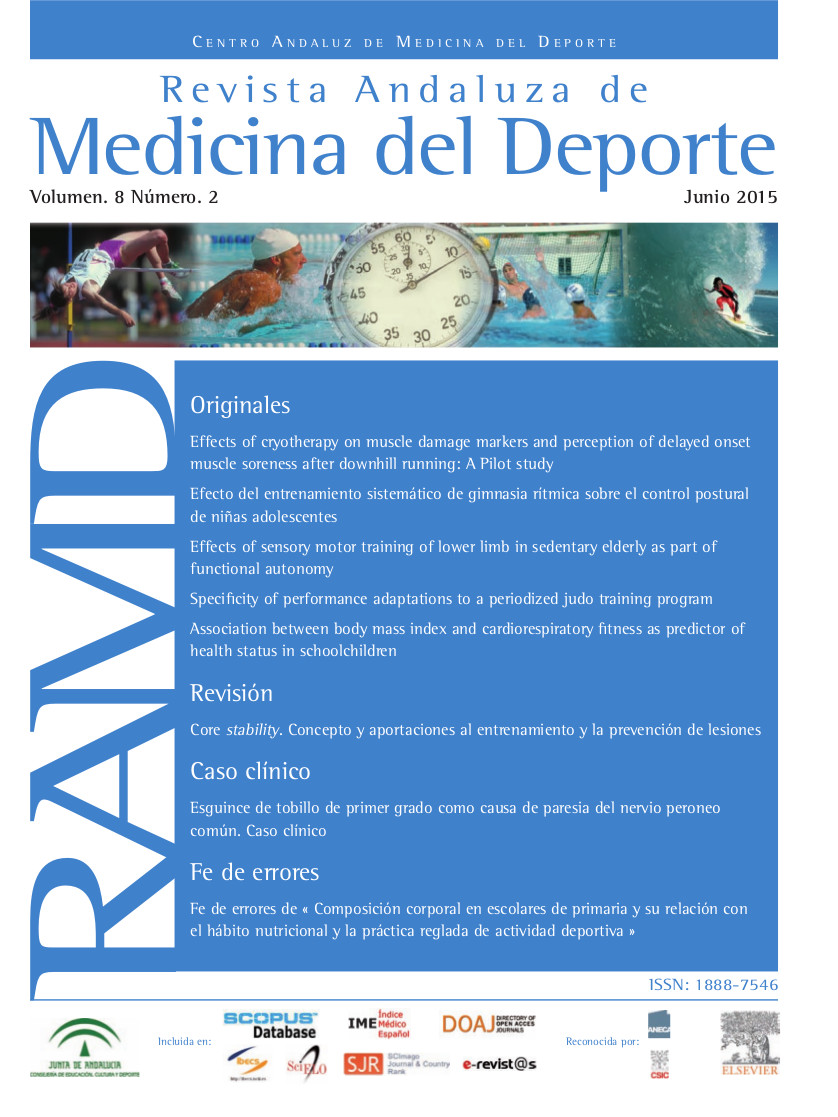Efeitos da ginástica rítmica sobre o controle postural de meninas
Resumo
Objetivo
O presente estudo teve como objetivo verificar se o controle postural, em condições estáticas, é um fator discriminante entre meninas praticantes de ginastica rítmica (GR) de alto nível e seus pares normalmente ativas.
Métodos
Dezesseis atletas praticantes de GR que competiam a nível nacional espanhol (GR: 9,7 ± 1,4 anos; 32,3 ± 3,6 kg, 143,1 ± 7,4 cm) e 16 meninas não atletas (GC) (GC: 9,8 ± 0,9 anos; 36,2 ± 5,4 kg; 139,2 ± 6,9 cm) participaram deste estudo. Todas as voluntárias realizaram 2 provas, uma com olhos abertos (OA) e a outra com olhos fechados (OF), que consistiam em manter-se imóveis durante 30 segundos sobre uma plataforma de força. Baseado no deslocamento do centro de pressão, as variáveis calculadas foram: Área da Elipse de 95% (A95), Velocidade Média Total (VMT), Velocidade Antero-Posterior (VMA/P), Velocidade Médio-Lateral (VMM/L) e análise de frequência (transformada rápida de Fourier).
Resultados
Foi observada diferença significativa quando compararam os grupos para VMM/L e VMT, mas não houve diferença para A95 com OA e OF. Curiosamente, GR demonstrou maiores valores de VMM/L que GC em ambas as condições. A ausência da visão afetou menos o grupo GR. A transformada de Fourier revelou que o grupo GR obteve maiores valores de densidade espectral no plano M/L.
Conclusões
Os resultados sugerem que o controle postural, em condições estáticas, é um fator discriminante entre meninas praticantes de GR e o grupo controle não atleta. Contudo, metodologias tradicionais para a análise de CP não são sensíveis para total entendimento da dinâmica do CP.


